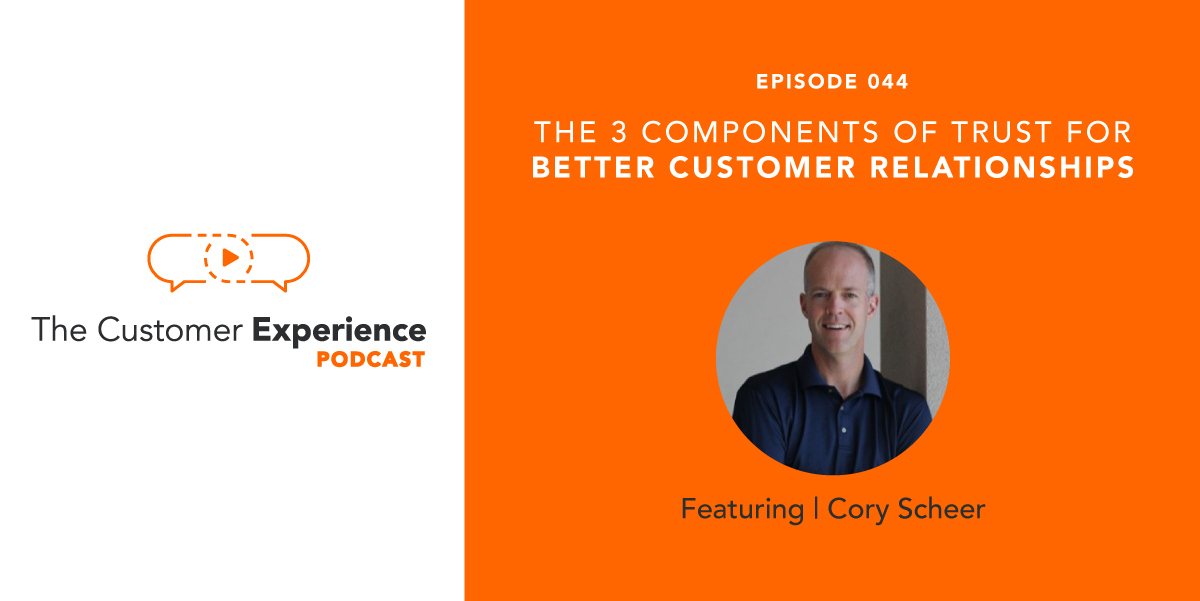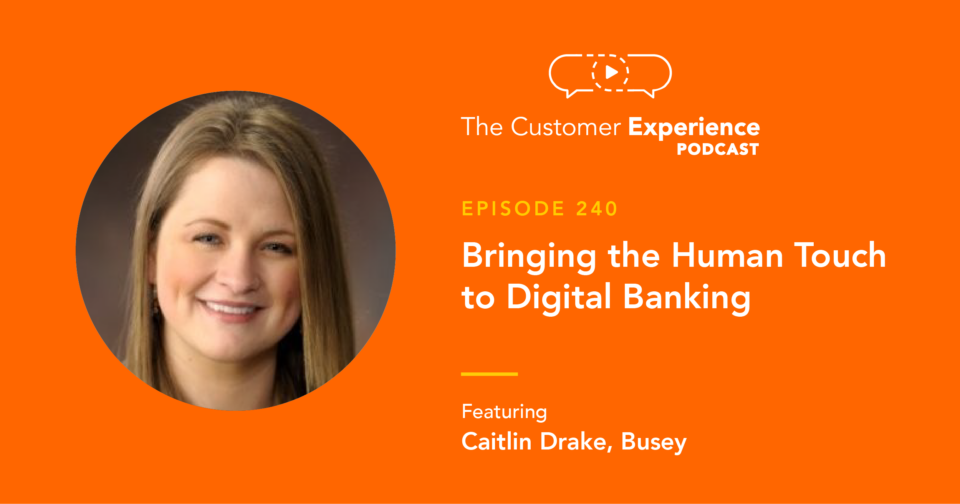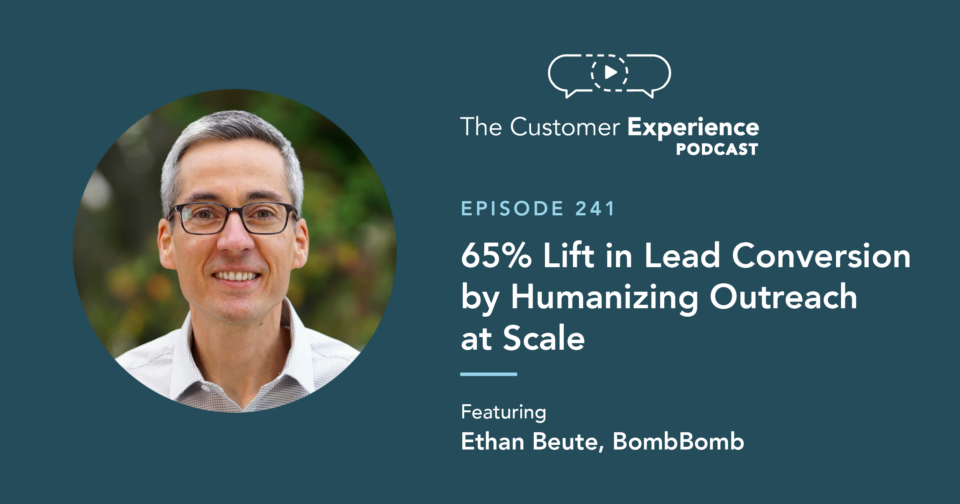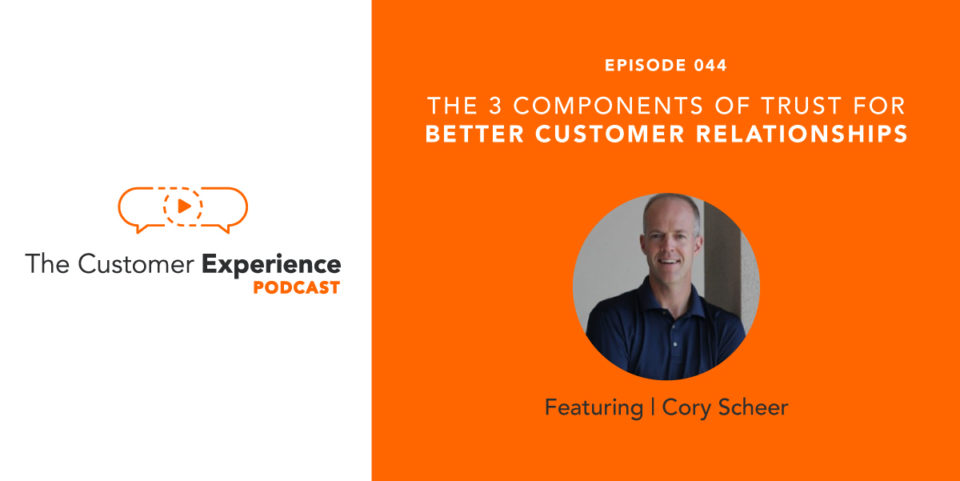
Apple Podcasts | Spotify | Google Podcasts | Stitcher
Every time Cory Scheer puts on his Brooks running shoes, he has a great experience.
He doesn’t get blisters and his feet feel comfortable.
And when it’s time for a new pair of shoes, he turns to Brooks Running. And he does it often; Cory’s completed more than two dozen marathons.
So, how can you and your company you create experiences like this? Experiences that make your customers want to come back again and again? Experiences that encourage them to write online reviews and to tell their stories with others?
It starts with trust.
On this episode of The Customer Experience Podcast, Cory joined us to talk about why building trust is the key to developing a loyal customer base, the three components from which trust is created, and how trust precedes value and loyalty in cusotmer relationships.
Cory currently serves as Director of Church and Community Engagement at Pleasant Valley Baptist Church in Liberty, Missouri. Previously, he’s served as the Business Director at a whitewater rafting company in Colorado, VP of Strategic Partnerships at the YMCA of Greater Kansas City, and Dean of Admissions at William Jewell College.
He also earned an Executive MBA and a Doctorate in Education, completing his doctoral work on the topic of trust, value, and loyalty in relational exchanges. His qualitative research focused on retention rates of college students and built from this study by Deepak Sirdeshmukh, Jagdip Singh, and Barry Sabol
In light of this expertise in trust and diverse professional experience, his take on customer experience was of high interest to me.
When you walk away from a company after interacting with their product and their team what part of it do you remember most? For Cory, that is the most essential part of any experience a company can provide. Check out the clip below for Cory’s thoughts on how this translates to a good (or bad) customer experience …
In Cory’s words, you’re left with a “residue” after an interaction with a company. It’s such interesting language, because it has that physical aspect to it. You can see it and feel it. It stays with you, but it can also be washed away.
Your brand experience may leave a customer with a good residue or a bad residue. And in some cases, you walk away with no residue at all. Obviously, you want customers walking away with a positive residue – and that’s what customers prefer for themselves.
When there’s a bad residue, it’s often because something about that customer experience just didn’t feel right. The customer may have felt a “brand violation” or a “trust violation.” Because this can send your customers to your competitors, we have to avoid these violations. Fortunately, Cory gives us some insight on how to do that.
Read, watch, and listen to this episode to learn:
- The 3 components of trust
- The relationships between trust, value, and loyalty
- The key component to employee retention
- The value of video in building trust
- The relevant characteristics of Jim, Dwight, Michael, and Pam from “The Office”
- More!
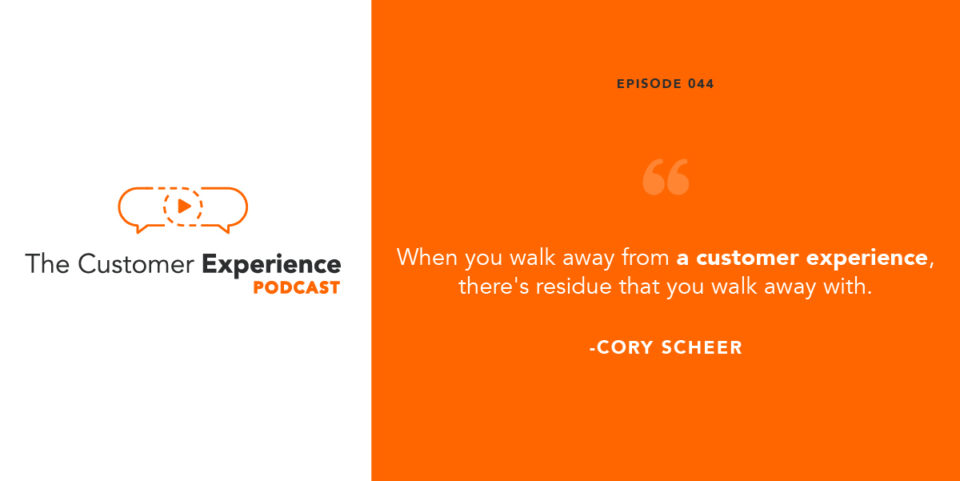
The 3 Components of Trust for Better Customer Relationships
You can read overviews and watch video clips of every episode of The Customer Experience Podcast here in the blog, but you can also listen, of course, in your favorite podcast player.
Subscribe, rate/review, and listen in Apple Podcasts, Spotify, Google Podcasts, or Stitcher.
Hear my conversation about trust, value, and loyalty with Cory Scheer right here …
The 3 Components of Trust
Every time a customer interacts with your people, your product, your service, or your brand, the most important thing you can do is build or maintain trust. This trust dynamic is present in two facets of your business: customer-facing employees and your policies and procedures (similar to the front and back of house framework of operations).
See how Cory explains the measure for each of them in the next clip …
All three of these components of trust must be present to build or maintain its strength:
- Competence (being knowledgeable in the role the employee or policy fulfills)
- Problem-solving (reducing stress and solving problems rather than creating them)
- Operational benevolence (putting customer needs before company needs)
Whenever you don’t have all three, you’ll lose or erode trust with your customers.
To illustrate, Cory references “The Office” as a great example of how an employee can represent some, all, or none of these components while connecting with customers. The television show is a case study in organizational leadership and trust dynamics.
For some excellent connections between the main characters and each element of trust, watch the clip below …
As any fan of “The Office” can confirm …
Jim Halpert lacks competence and problem-solving, but is incredibly benevolent in his operations. Cory describes him as “the hardest person to fire in a company.”
Dwight Schrute has incredible competence and problem-solving, but lacks benevolence. Though he’s the best salesperson by far, he’s the most in need of trainining in humility and emotional intelligence.
Michael Scott, the “boss” of the office, has the most influence, but lacks competence, problem-solving, and benevolence! He’s perpetually a trust violation waiting to happen. Exhibit 2,148: Scott’s Tots!
Pam Beesly-Halpert, who has the least influence in leadership and decision-making, possesses and demonstrats all three qualities of trust. She is the most important figure in the company and is the guide for what other staff members should strive toward.
I don’t know about you, but I absolutely enjoyed and appreciated how Cory laid this out. It helps anyone who’s seen the show really understand the three building blocks of trust.
Trust Before Customer Value and Value Before Customer Loyalty
Value and loyalty are layers of the customer relationship that your company creates after and on top of the foundation of trust. Increased value is a natural outcome of increased trust. Your value proposition is only meaningful once trust has been established. And consistent delivery of value leads to customer loyalty.
Check out the clip below to learn how trust, value, and loyalty stack to create a meaningful relational exchanges and positive customer experience …
“Think about trust as the water coming into the pond,” suggests Cory. “Value is the boat that’s rising because there’s trust underneath it.”
From there, “loyalty is the experience customers have as the result of the trust that’s being built and the strong value proposition … that’s the residue of a great experience that people want and come back to.”
Again, trust is a necessary precursor to value and loyalty. And any absence of competence, problem-solving, and benevolence results in a trust violation that erodes the customer relationship.
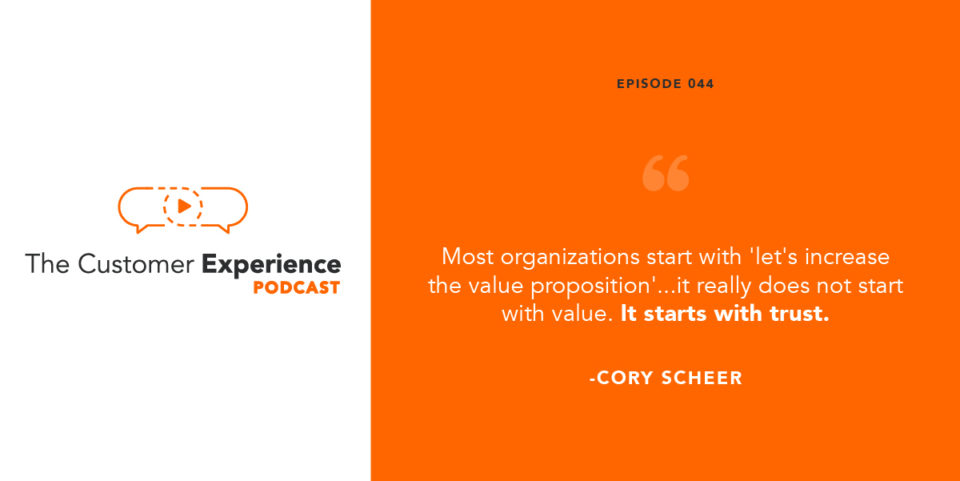
In talking about loyalty, Cory refers to Southwest Airlines. We’ve come to expect a great experience from them. Their name’s come up on this podcast several times. So, if you’re on a Southwest flight and you experience an flight attendant who isn’t pleasant or even kind to you, that trust is violated. Once that happens, the perceived value goes down and loyalty is treatened.
Most companies start by trying to increase the value proposition, but that’s the wrong place to start. We must start with trust.
Churn, Retention, and Customer Relationships
Competence, problem-solving, and benevolence. Trust, value, and loyalty. These frameworks came to Cory through his work as a doctoral candidate. And he was led to that work in part through his service as a Dean of Admissions at a college.
With the college students as his customers, Cory couldn’t help but notice that all of the work to create awareness, become the organization of choice, gain the commitment, and onboard the customer was for naught if he or she left the school.
Think about your business or organization. How long is your sales cycle? What is your retention rate? How long do customers stay? Does their lifetime value exceed your cost of acquisition?
Watch this next clip to learn one element in the customer relationship that dramatically improved retention for Cory and the college…
The average churn rate for incoming college students is more than 20%. More than one in five leaves the school prior to the start of the sophomore year. Some transfer to another school and others drop out entirely. Imagine 20% to 25% of your customers leaving your company within a year of the start of the relationship. That’s a problem you want to solve – as it was for Cory!
He decided to look at the cohorts of students who stayed at the school through each successive year. He interviewed students about what their perceived value, only to learn that it was more about trust than about value (again, a common mistake organizations make!).
The main takeaway: “The number one indicator of success for a student, the number one catalyst to move them through from sophomore year to junior year to senior year. It wasn’t the institution itself or even the brand power of that institution,” says Cory. “It was actually the front-line employees.”
In other words: retention, in his research, is about people and the bonds we build with them. For his higher education institution, the professors and coaches with whom the students connect are fundamental to customer experience, customer success, and reduced churn.
That makes sense. Every business that transcends simple transaction is built on relationship. Whether B2B or B2C, these businesses are H2H or human-to-human.
More Human Communication for Stronger Customer Relationships
Especially for organizations with longer sales cycles, higher price points, or complex product or service offerings, the role of trust and relationship is critically important. That human connection is the basis of value and loyalty.
So, why are we so reliant on faceless, digital communication to create awareness, provide education, and aid in selection of our companies by our prospective customers? Why do we entrust our messages to plain-text email, voicemails, and other forms of communication that fail to put ourseles in front of people in a personal and human way?
Cory hadn’t thought much about video communication prior to connecting with me for this podcast episode. But it left an impression on him, as he describes in this clip …
When I sent Cory a video reply in an email with his name written on a whiteboard, “it literally redefined email” for him.
“That was very powerful. It was a trust-building experience for me,” explains Cory. The execution of a simple, one-to-one video shows attention and care that can’t be faked.
Building trust leads to customer value and customer loyalty. Why not get face to face with more people more often!?
This post is based on a conversation with Cory Scheer, who’s open to connections on LinkedIn (and be sure to add a note to let him know why you’re reaching out).
He’d love to talk about how to build trust within your organization, through your people, and through your policies and procedures.
Get More From The Customer Experience Podcast
Similar Episodes Available Now:
- “Superior Customer Experience Starts Before There’s A Customer” with Rachel Ostrander (Director of Runner Experience, Brooks Running)
- “Take Care Of Your Brand And It Will Take Care Of You” with Kurt Bartolich (Founder, Guts Branding)
- “Better Ways To Build Trust With Your Customers” with Charles Green (CEO, Trusted Advisor Associates)
- “Company Culture As Your Competitive Edge” with Lance Risser and Levi Ayriss (VPs of Field Operations, Dutch Bros Coffee)
Guests Coming Soon:
- Scott Barker – Sales Enablement Evangelist at Outreach and Head of Partnerships at Sales Hacker
- Wes Bush – Founder of The Product-Led Institude and author of Product-Led Growth
- Kristin Messerli – founder and CEO at Cultural Outreach
Places to Subscribe, Rate, and Review:
Build Trust with Simple, Personal Videos
Create for your customers the experience I created for Cory by sending a simple webcam video from my desk while standing under standard-issue, flourescent, overhead lights in my office.
Nothing special. No lights, scripts, or equipment required. Just the sincerity and authenticity you exude as you reach out to the people who matter most to your business.

